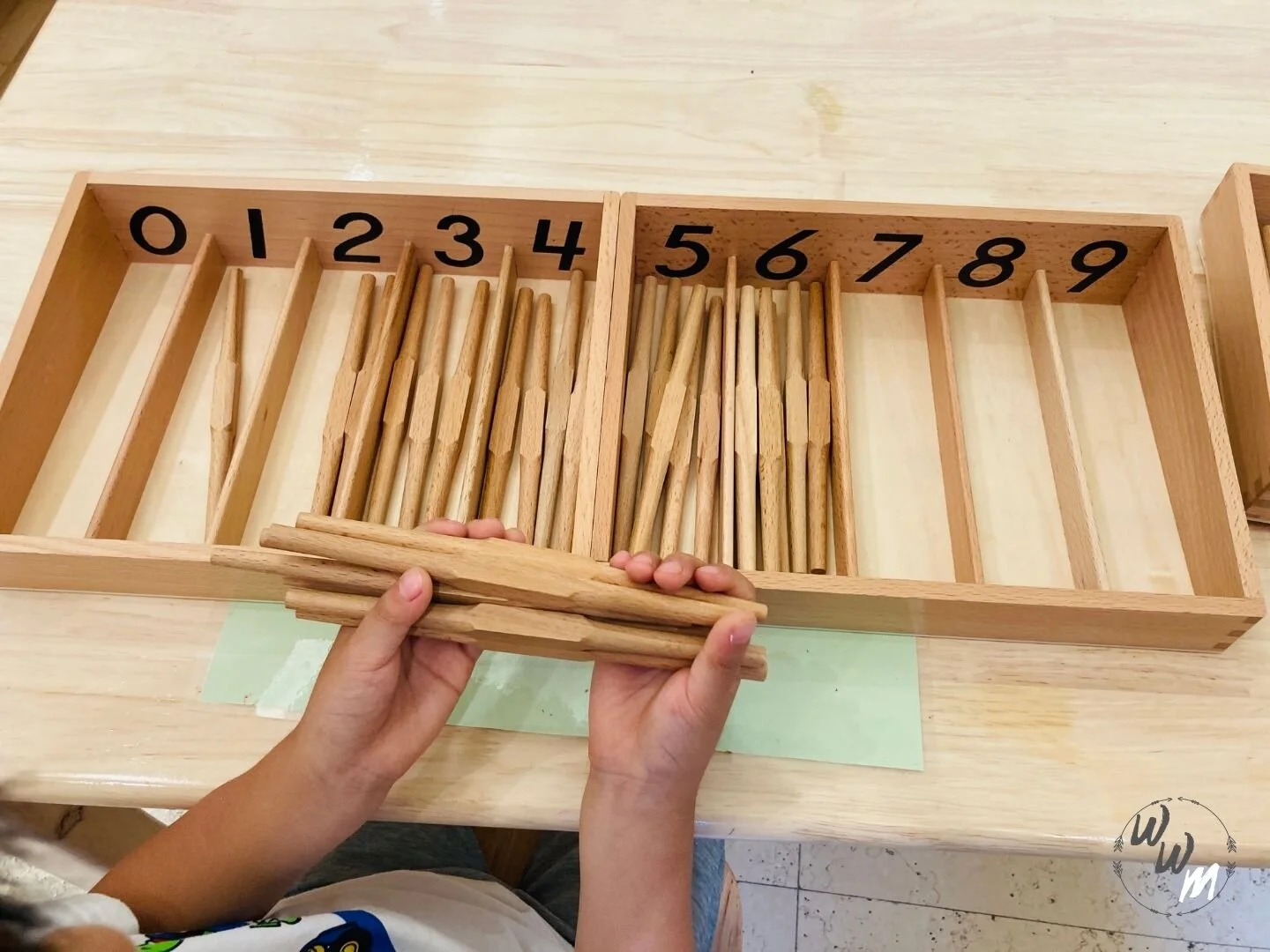Spindle Box
What are Montessori Spindles?
Montessori Spindles are long wooden sticks that are kept in a rectangular wooden box. There are two boxes, each divided into five compartments, with individual numbers 0-9 printed at the back of the compartments. The first box has compartments for numbers 0-4, and the second box has compartments for numbers 5-9. The aim of this activity is for the child to place the correct amount of spindles into the respective numbered compartment.
Spindle Box
How the Spindle Box is presented
The Spindle Box is an Early Montessori maths activity where the child is able to visually identify a written number and match a loose quantity of spindles to that particular number on the board.
The directress begins by introducing a spindle to the child, asking him to feel it. She points to ‘Number 1’ on the box and asks the child what number it is and he replies by saying “one”. She then picks up one spindle and holds it tightly to get a muscular impression of quantity. She says ‘one’ and places ‘one’ in the child’s hand. The directress then points to the number one compartment and asks the child to place the spindle into the correct compartment.
There are 45 spindles in The Spindle Box
This continues in the same manner until all of the 45 spindles have been counted and placed into their correct number compartment. As there are exactly 45 spindles in the Montessori spindle box, should there be any short or leftover, the child will know if something went wrong. At the end of the activity, there should be no spindles leftover, or any short. The directress reminds the child that there are no spindles leftover in the box, or should there be any spindles in the number compartment ‘0’.
Control of error in The Spindle Box
The number of spindles over or short by the end is the activity’s ‘control of error’. Should there be spindles leftover, or any spindles short, then a mistake has been made somewhere, which the child needs to find, identify, and fix.
The directress emphasizes that ‘zero’ is a place holder and zero means ‘nothing’ because its holding it’s place until number 10.
Once the child has counted and placed the correct number of spindles into the number compartments, he is asked to replace each spindle one by one back into the wooden box in which it lives.
What does the child learn by working with the Spindle Box?
This activity helps the child gain a muscular impression of quantity, promotes listening skills and it helps the child develop the concepts of numerical sets, as well as giving the child further practice in associating each number with its real quantity.
Looking for more Montessori activities?
Here is a list of all the Montessori Maths activities including Early Maths, Introduction to the Decimal System, Seguin Boards, The Hundred Board, The Short Bead Stair, Bead Chains, The Snake Game, Group Operations, The Large Number Rods, Recording with the Small Number Rods, The Short Bead Stair, The Strip Boards, The Boards, The Stamp Game, The Abacus, The Dot Game, and Fractions. Just click on the page you want to learn about to go there.
Early Maths
Introduction to the Decimal System
The Short Bead Stair
Seguin Boards
The Hundred Board
Bead Chains
The Snake Game
Group Operations
Large Number Rods
Recording with the Small Number Rods
The Short Bead Stair
The Strip Boards
The Boards
The Stamp Game
The Abacus
Operations with the Abacus: Static addition (without change)
Operations with the Abacus: Static multiplication (without change)
Operations with the Abacus: Static subtraction (without change)

